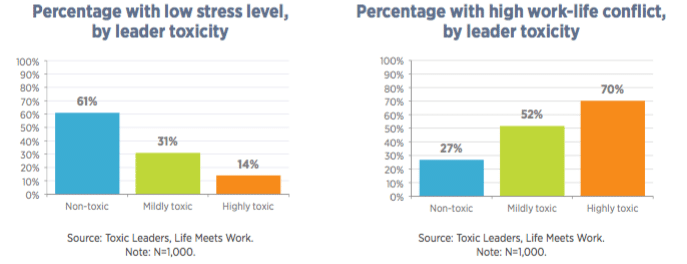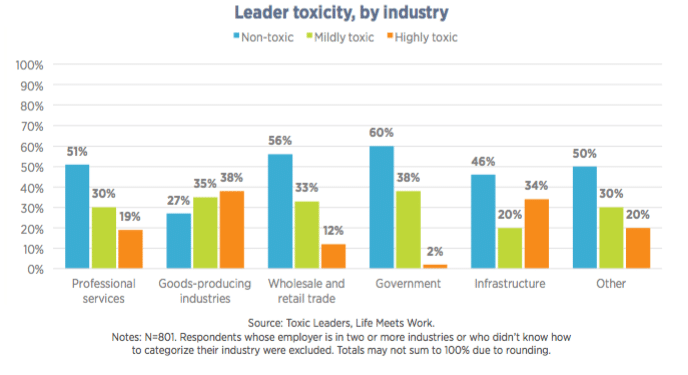Workforce consulting firm Life Meets Work recently announced new leadership research, finding that 56 percent of employees report having “toxic” workplace leaders, who exhibit behaviors such as publicly belittling subordinates, having explosive outbursts, and accepting credit for others’ successes.
The firm released the results in a report entitled Detoxifying your Culture and Encouraging More Mindful Leadership. According to the report, while toxic leaders can be highly effective in the short term, their methods tend to burn out employees and present long-term risks for the organization.
The survey, fielded among 1,000 college-educated U.S. employees, ages 18-70, asked respondents questions about the leadership of their immediate managers.
Surprisingly, the survey found that respondents who report to highly toxic leaders are more highly engaged at work (68 percent) than those with nontoxic leaders (35 percent).

“One of the most fascinating findings of our research is that so many employees with highly toxic leaders report being highly engaged and staying with the toxic leader longer,” said Kenneth Matos, psychologist and vice president of research for Life Meets Work, in a news release. “However, while employers might find short-term value in promoting demanding leaders, in the end that proves detrimental to a long-term talent strategy.”
Overall, more employees working for highly toxic leaders report high intent to leave the company (73 percent vs. 24 percent) and work-life conflict (70 percent vs. 27 percent) than those working for nontoxic leaders. And far more employees working for highly toxic leaders (81 percent) suspect them of discriminating when assigning career opportunities compared with nontoxic leaders (8 percent).

The study also found that toxic leaders are more common in high-stakes, win-or-die cultures. In these work environments, 63 percent identify their leader as highly toxic, whereas only 1 percent of those in low-stakes cultures do so.



